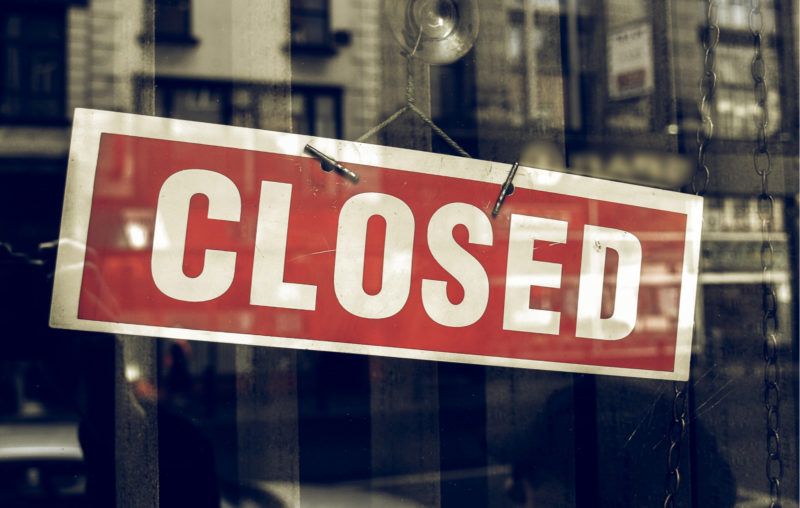Economic Planning Will Extend Economic Misery

Although the forced economic contraction born of panic by politicians over the coronavirus has been harmful to most everyone, there have been winners. During times of trouble, new ways of doing things invariably emerge.
As is well known, Zoom Video Communications has been one of the emergent. Owing to the need for people to connect personally or professionally while locked down, usage of Zoom has soared. This happy reality for the San Jose-based company has reflected in a stock price that has tripled in the past six months. Silicon Valley “Unicorns” are worth $1 billion and up. Zoom’s market cap is presently $46 billion.
Crucial is that Zoom is the seen. Unseen are the hundreds and realistically thousands of technology companies that have gone bust amid Zoom’s ascendance for reasons related and most often unrelated to the lockdowns. The failure rate in Silicon Valley is 90%+ even in the best of times. Most companies founded out there die, including no doubt, all sorts of companies that some would say resemble Zoom. Just as there were countless start-ups that resembled Google on the way to Google becoming a verb, so were there countless Zoom-like start-ups on the way to Zoom becoming a verb. Which is pretty much the point.
Zoom is a miracle born of endless investment in hundreds of companies like it by discerning investors hoping for a miracle. And it should be stressed that it’s a miracle when Valley companies reach Unicorn status. Like Zoom, Valley “unicorns” are the seen that all too many in the media focus on ahead of blaming the Fed, “bubbles,” and irrational exuberance for the existence of the unicorns in the first place. They rarely acknowledge the countless businesses that die unheralded deaths. The coverage is always accusatory. “Too much dumb money.” Stuff like that.
Rarely is it said by the endless scolds that in a country full of talented people, investment will generally be abundant. And contrary to the silly narrative promoted by the wise (think Warren Buffett and Jamie Dimon) and less than wise (think Hillary Clinton) about “quarterly capitalism” informing the thinking of investors in U.S. businesses, investors in the kinds of companies that oh-so-extraordinarily-occasionally become unicorns are the embodiment of patient. How could anyone say anything but that about them? As actor and prominent VC investor Ashton Kutcher has made plain, nearly every company he invests in goes belly up. The very, very few investments of Kutcher’s that bear fruit pay for exponentially more misses. Which is the point.
And it speaks to something crucially missed during economic downturns most of all: the savings that increase during economic declines as workers become more careful are a major sign of recovery on the way. The productive in society have a choice about what to do with the fruits of their work: they can either consume it or save it. Economists think entrepreneurs and businesses hope the productive will consume with abandon during the down times, but that’s just not true.
Consumption is always rampant, even during the slow times, in countries like the U.S. It’s something that is highly enjoyable and that finds well-run businesses of all kinds with great frequency. What entrepreneurs and businesses really want, and that they’re endlessly in search of is unspent wealth to fund their visions and their ideas for future expansion. The problem is that it’s very hard to attain access to investment. That’s why investment bankers are paid so well. Businesses compete with consumers for access to what’s incredibly difficult to get.
Which brings us to a recent column by Neil Irwin in the New York Times. He writes without skepticism that economists have a “crisp-sounding solution” to crises: “Calibrate government help, such as unemployment insurance and aid to state governments, so that it rises automatically when the economy is weak and falls as the economy returns to health.” There readers, is your explanation for why economists are generally most visible during crises. They are because they are the crisis.
To be clear, the “crisp-sounding solution” offered by economists as the driver of recovery is hopelessly backwards. What economists believe is that when an economy is at its weakest point, that’s when government should spend the most. You really, really can’t make this up.
Implicit in their backwards view of the world is that unspent wealth just sits unspent. No. Not at all. What’s unspent amounts to working capital that financial intermediaries can direct to higher uses. When we don’t consume our resources, meaning we save, our savings are instantaneously snapped up by others for a fee such that we get more in the future in return for access to our savings now.
Per Irwin, economists think the answer to slower economic periods is for government to step in front of entrepreneurs and businesses in pursuit of our unspent wealth. Economists then think the “crisp-sounding solution” is for government to pay human capital to sideline itself all the while empowering even more spending of precious savings by government.
Back to reality, economic growth is a consequence of people. Since it is, there’s nothing gained by government creating even the most minute of incentives for people to stay jobless. Crucial is that businesses gain from adding human capital, but if they’re bidding against governments compensating for idleness, the cost of bringing human capital back into the workforce rises.
But the main barrier is the government spending itself. As we know from companies like Zoom, they are the major miracles amid all sorts of failed capital allocations for investors. Important is that the more investments investors make, the greater the number of ideas funded and the greater the likelihood of investors finding a few Zooms, Googles and Amazons amid all their expected mistakes.
As evidenced by how many hundreds of thousands the above companies employ, not to mention how many hundreds of millions are made more productive by their existence, economic growth is a consequence of precious capital being matched with all manner of interesting ideas on the way to a few successes, along with many more failures that set the stage for the successes of tomorrow.
Government spending gets in the way of this. So if the economy is weak, shrink that which limits the investment that powers all economic growth. Central planning of resources doesn’t work during good times, which means it most certainly doesn’t during the bad. Economists don’t know how to help us out of downturns simply because they are the downturn.
This article first appeared in RealClearMarkets












